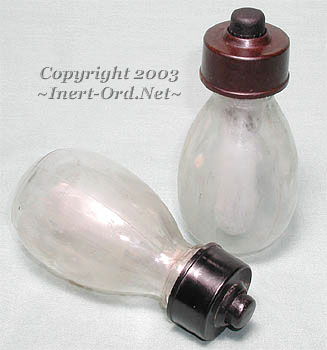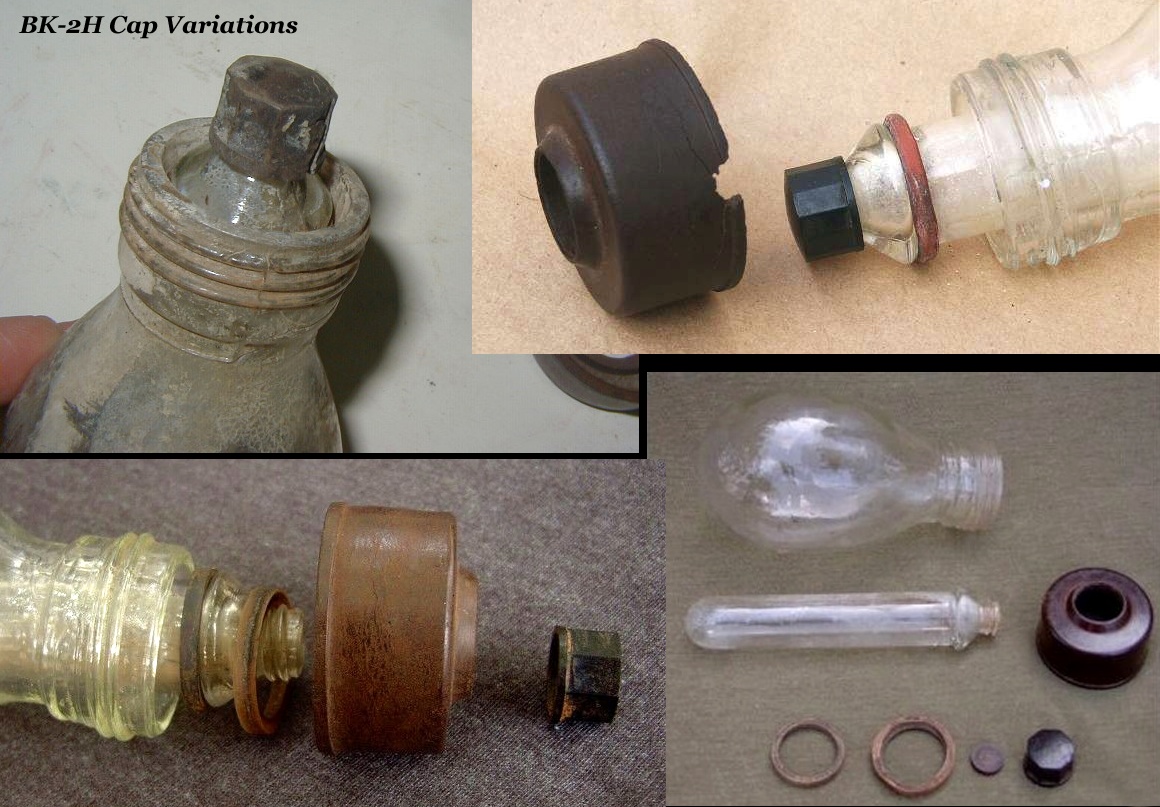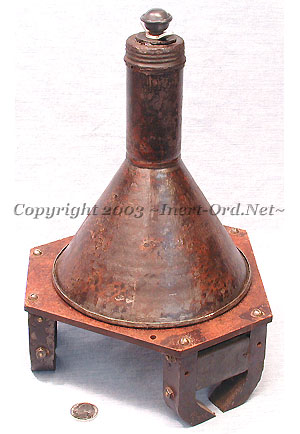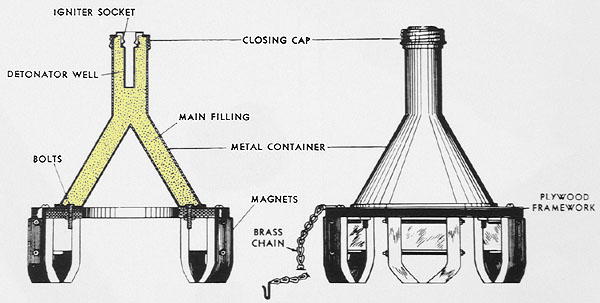
This is the second model Blendkörper ("Blinding Devices") BK-2H, introduced in 1943 as an anti tank weapon. It consists of a heavy glass bottle with a smaller glass vial nested inside. The dual bottle arrangement kept two chemical solutions separated.
The Blendkörper were thrown against tanks, smashing the glass containers allowing the chemicals to mix, creating a spontaneous volatile reaction producing a dense caustic cloud. Target areas were hatches, air vents or other openings leading to the main crew compartment. The smoking mixture would penetrate to the interior of the tank incapacitating the crew, forcing them to abandon their vehicle.
Despite appearing to be a bizarre weapon, the Blendkörper were rather common in use. Over 5 million BK-2H were produced and practically all were used up by the end of the war.

There are three seals, diferent shapes, materials unknown. One each, under the small cap, the large cap-ring and between the vial and the grenade body. These parts apparently have a tendancy to age poorly, and are prone to disintegration. The top seal is a loose fit.
A guess, residual chemical agents contaminated the parts and compromised the material integrity over time?
At any rate, grenade examples are often found missing the seals (top seal especially) and to varying degrees the small cap and cap-ring.


